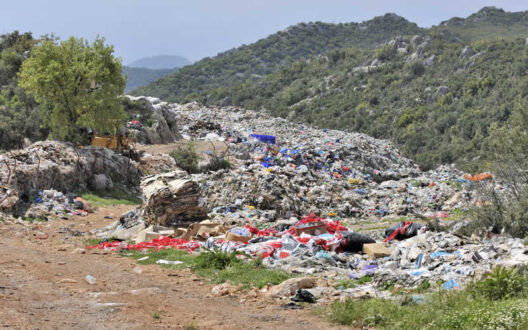Global warming is an unequivocal reality, one that evokes a sense of urgency among scientists, policymakers, and citizens alike. Intriguingly, the seemingly simple question, “Can we reverse global warming in time to save our planet?” encapsulates a plethora of complexities. It challenges us to dissect not only the science behind climate change but also the sociopolitical structures that influence our ability to affect change. Understanding the implications of climate change reveals not only the immediate threats to biodiversity and human well-being but also the vast potential for rectification through concerted global effort.
The crux of global warming lies in greenhouse gas emissions, predominantly carbon dioxide (CO2). Over the past century, human activities—primarily the combustion of fossil fuels for energy—have drastically elevated atmospheric CO2 levels. This unprecedented augmentation has engendered a greenhouse effect that leads to the warming of the Earth’s surface, contributing to a cascade of environmental alterations. Rising sea levels, shifting weather patterns, and increases in the frequency and intensity of extreme weather events serve as harbingers of the broader ecological turmoil that is to come if corrective measures are not employed swiftly.
Yet, the potential to mitigate these dire outcomes exists. The question of reversing global warming bifurcates into two primary avenues: emission reduction and carbon removal. The first step is incontrovertibly critical; transitioning to renewable energy sources—such as solar, wind, and hydroelectric power—can fundamentally alter the trajectory of our planet’s climate. The International Renewable Energy Agency underscores that renewable energy not only contributes to the reduction of greenhouse gas emissions but also provides an array of economic benefits, such as job creation within burgeoning industries. The paradigmatic shift in energy production is not merely a hopeful suggestion; it is a necessity if we are to redirect our pathway before reaching a point of no return.
Moreover, policies aimed at fostering energy efficiency can yield substantial dividends. Improved insulation in buildings, the adoption of energy-efficient appliances, and the promotion of public transport systems can significantly lower energy consumption. Legislation like the Green New Deal illustrates a burgeoning political will to embrace such transformative changes, advocating for an economy that aims to reach net-zero emissions. However, political paradigms often grapple with resistance and inertia. The intersection of environmental advocacy and economic interests places climate action in a complex arena where solidarity and ideological commitment are paramount.
Beyond reducing additional emissions, the contemplation of actively removing carbon from the atmosphere introduces a fascinating quandary. Techniques such as afforestation, reforestation, and soil carbon sequestration hold promise for capturing CO2 and sequestering it within natural and engineered systems. For instance, forests act as carbon sinks, absorbing CO2 during photosynthesis. Nevertheless, the scale required to counterbalance decades of carbon emissions necessitates a paradigm shift in our approach to land use and conservation practices. Innovations in technology, such as direct air capture, showcase the potential for engineered solutions to synthesize a climate-resilient future. Yet, such technologies demand significant resource investment and prompt questions regarding scalability and ecological impact.
In grappling with the reversal of global warming, it is essential to consider the sociocultural paradigm that governs our collective behavior. Climate change is not merely an environmental issue; it is intertwined with social justice, equity, and economic disparities. Communities in marginalized regions frequently bear the brunt of climate-induced disasters, exacerbating existing inequities. Addressing these disparities is a moral imperative, underpinning the essence of truly global solutions. The notion of ‘climate justice’ seeks to rectify the disproportionate burden borne by the least responsible for climate change while ensuring that solutions are inclusive and equitable.
Public awareness and education constitute another critical pillar in the fight against climate change. There exists an underlying fascination with climate science that transcends mere data and statistics. The narrative around climate change must be accessible to resonate with broader audiences, fostering a culture of accountability and action. Cultivating a sense of agency among individuals and communities transforms passive acceptance into active engagement. Grassroots movements, social media campaigns, and educational initiatives can galvanize individuals into unified action, showcasing the capacity for collective influence on a larger scale.
As we contemplate the timeline for reversing global warming, advancements in science and technology are imperative. Investment in research that aims to unravel the complexities of carbon dynamics, energy systems, and climate impacts is vital. Collaboration between nations, institutions, and industries extends beyond borders and genres, emphasizing that climate action is a universal endeavor. Just as climate change transcends geographical and political boundaries, so too must our response. Go beyond rhetoric and commit to actionable strategies that translate policies into tangible outcomes.
The impending question of whether we can reverse global warming in time comes laden with intricacies, yet it remains anchored in hope and possibility. While the challenges are formidable, the potential for collective action, driven by innovation and solidarity, offers a beacon of possibility. As humanity stands on the precipice of ecological calamity, the dawning realization that we have the agency to alter our trajectory becomes paramount. The preservation of our planet hinges upon our willingness to adapt, engage, and invest in a sustainable future. In the echoes of history, let us strive to be heralds of change, harmonizing our actions with the profound melodies of nature.








